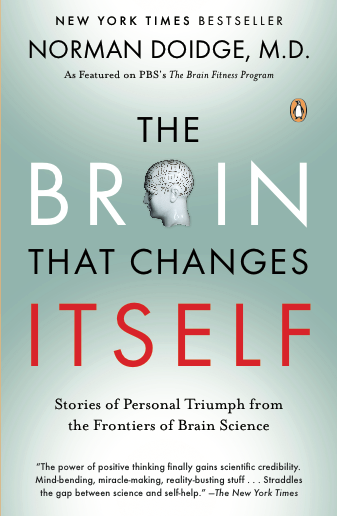
For those who don’t have time to read about the various discoveries chronicled in Doidge’s book, I want to share a section from Rick Hanson’s article ‘Is Your Mind Wandering?.’ Hanson has a fascinating video on the science of neuroplasticity, but in this short article he has been able, in a few words, to encapsulates two decades of discoveries in neuroscience:
Moment to moment, the flows of thoughts and feelings, sensations and desires, and conscious and unconscious processes sculpt your nervous system like water gradually carving furrows and eventually gullies on a hillside. Your brain is continually changing its structure. The only question is: Is it for better or worse? In particular, because of what’s called “experience-dependent neuroplasticity,” whatever you hold in attention has a special power to change your brain. Attention is like a combination spotlight and vacuum cleaner: it illuminates what it rests upon and then sucks it into your brain – and your self. Therefore, controlling your attention – becoming more able to place it where you want it and keep it there, and more able to pull it away from what’s bothersome or pointless (such as looping again and again through anxious preoccupations, mental grumbling, or self-criticism) – is the foundation of changing your brain, and thus your life, for the better. As the great psychologist, William James, wrote over a century ago: “The education of attention would be the education par excellence.”
William James admitted he didn’t know how this could be done, but believed that if it were possible to give children practical directions on how to develop the faculty of drawing back a wandering attention, that this would be at the very root of judgment, character, and will.
Maybe the science of neuroplasticity offers a solution to James’ predicament of how to develop this faculty in children.
“The education of attention would be the education par excellence.” William James
I say that because right now I’m working with a number of universities to develop materials they can use in Masters courses for the continuing education of teachers. Throughout this work, it’s been fascinating for me to come across materials which suggest that offering age-appropriate instruction on neuroplasticity to kids can actually become a basis for helping students increase their capacity for present-moment attentiveness. In the video below, actress Goldie Hawn explains how giving children instruction on the brain, including sharing how they can control their flexible brains through the choices they make, can be empowering to students to better control their brains, and through better controlling their brains, also to better manage their emotions.
“Neuroscience tells us that the brain is command central” Hawn shared. “I wanted to help children understand how their brain works, how it is always with them and influences their thoughts, feelings and behavior. I’ve seen this level of understanding empower children and fundamentally change their lives.”

